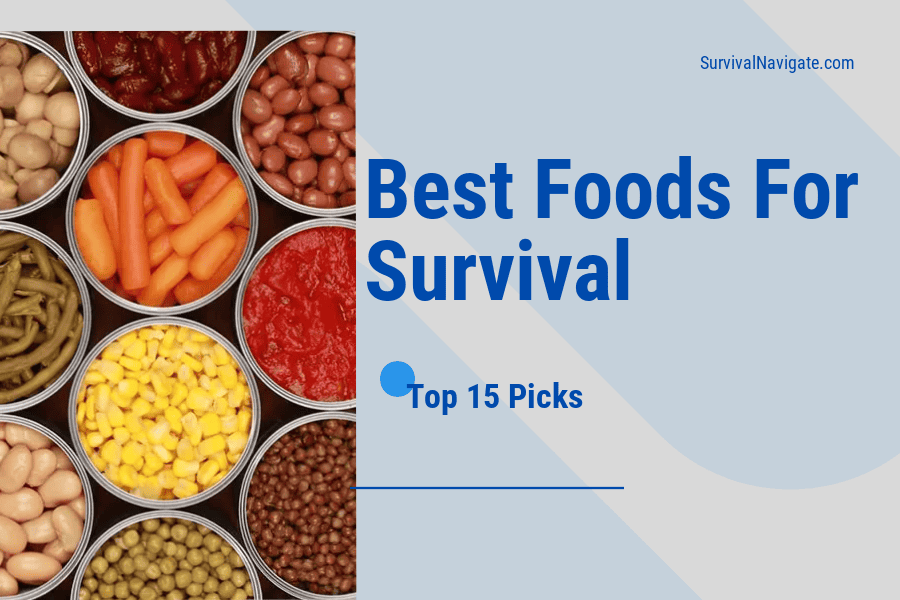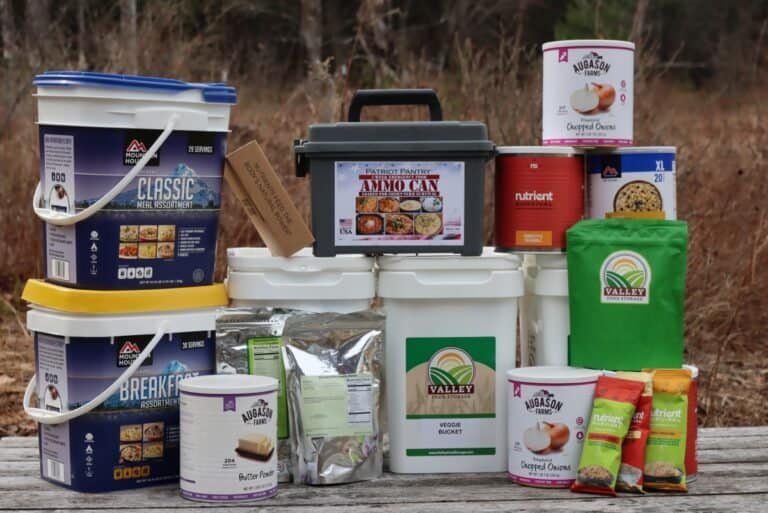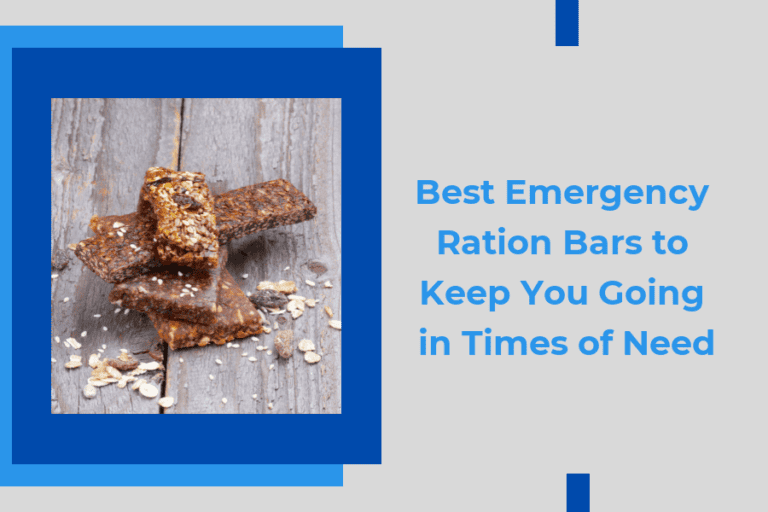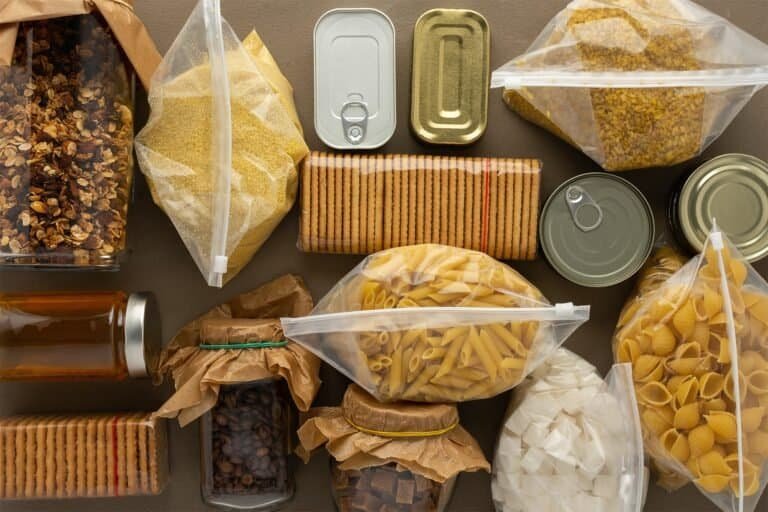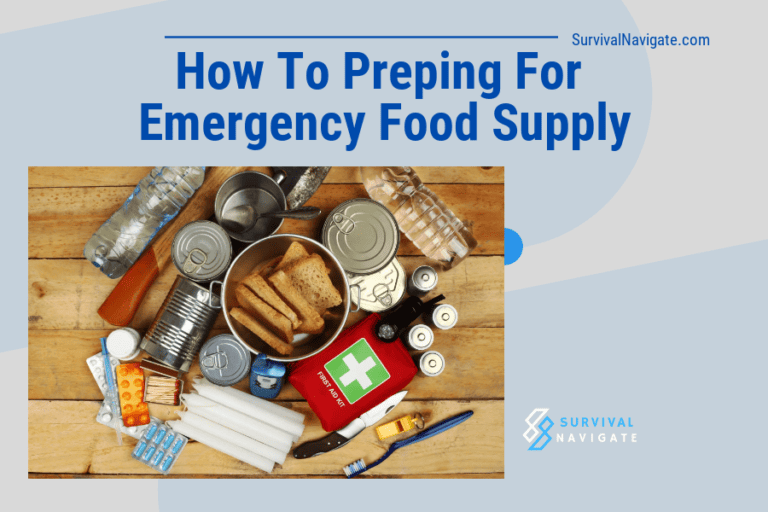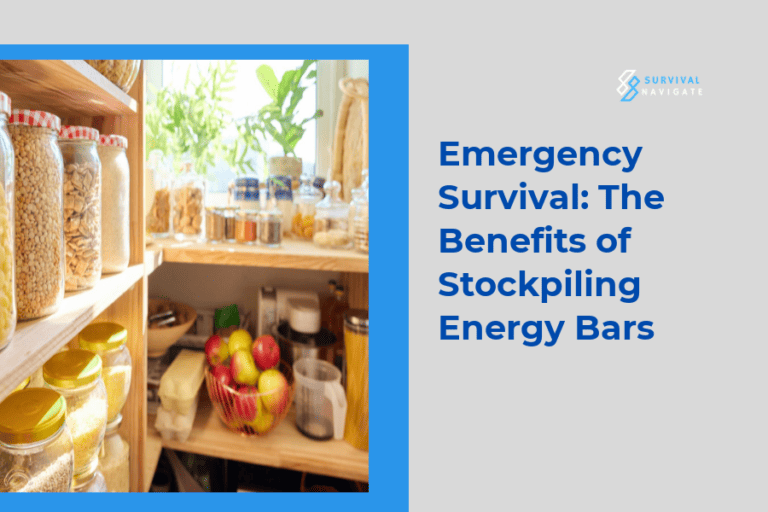Best Foods for Survival – Top 15 Picks
When food is in short supply, it’s important to have a backup plan for your family – especially if you’re unprepared. In the event of an emergency, there are some foods you should buy and store now so that they will be on hand when needed later.
It’s always good to rotate your stored food into your regular diet every six months or so; this way, you can eat all of the items while they are still fresh. Storing non-perishables may seem like a waste of money at first glance but having these items on hand could save lives after an emergency strikes.
Some things everyone needs in their pantry: canned meats (chicken, tuna and salmon), fruits and vegetables (canned or dried) , peanut butter , cereal or granola bars , high-energy foods such as nuts and seeds, comfort/stress foods including chocolate candies and hard candy . It is important to have these on your checklist.
Ideal grain candidates for long term storage should be less than 10 percent moisture for the longest storage life.
Canned Meat
It is essential to buy canned meat because it is easy to prepare. It has a longer shelf life and is very convenient. There are many types of canned meat available. You can choose from chicken, beef, fish, and vegetable.
Canned meat contains about 25 percent protein. This is more than the amount of protein in fresh meat. It will also supply you with a lot of iron.
You will be able to lose weight if you eat canned meat. This is because you will be getting the required amount of energy. You can make sure that you have enough protein by eating canned meat.
You will also get fiber from canned meat. This is essential because it will help you to stay healthy. Fiber is important for keeping you regular. If you don’t have enough fiber, your digestion process will be impaired.
Canned Fruits & Vegetables

Canned fruits and vegetables have a long shelf life. Vegetables can keep for 2 to 5 years, while fruit keeps 1 to 3 years.
But the contents begin degrading even before you open them (and once they’re opened, the clock really starts ticking).
Keep canned foods in a cool, dry place away from heat sources such as the stove or refrigerator.
Heat speeds up deterioration by causing water molecules to evaporate more quickly.
Flour
Having flour in storage for survival is a plus. You can use it to make anything from pancakes, scalloped potatoes, vegan naan and banana bread just to name a few.
All you need are some other ingredients like eggs, oil or butter and milk (for vegan recipes). Coconut flour has gained popularity as an alternative low carb diet that may not be suitable for everyone due to its high fiber and fat content.
While coconut flour does have a place in the kitchen many people should look into almond flour or whole grain flours rather than coconut if they are trying to lose weight.
Nut Butters

Peanut butter is a mainstay of most American pantries, and for good reason. It’s high in both fats and protein, two nutrients that the body needs to function properly.
Because it can be stored at room temperature without spoiling (peanut butter actually has a shelf life past its expiration date), peanut butter is an extremely valuable survival food item to keep on hand.
Peanut butter works well as either a standalone snack or paired with other foods such as crackers or fruit.
While many people are careful not to combine peanut butter with jelly due to concerns about food safety and spoilage risk, combining any spreadable food product (including jam) with peanut butter does not pose much of a threat provided the proper precautions are taken when storing them together in your home pantry—and even if you go further than that by packing them up for travel or long-term storage purposes!
Canned Soup
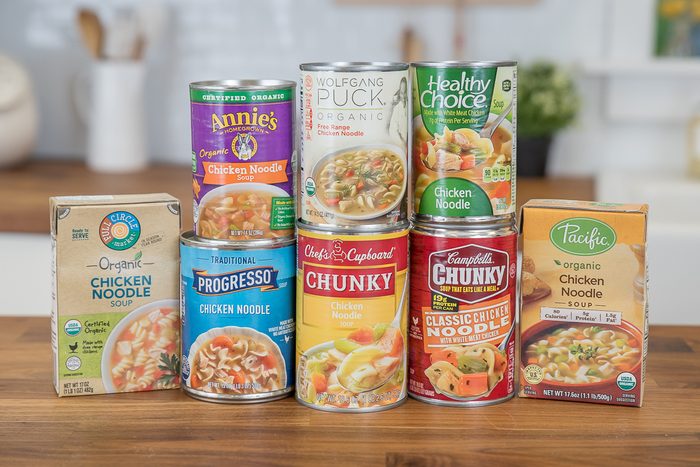
There are many brands of canned soups available, each with different varieties. Canned soup comes in a variety of flavors and ingredients, including those that are vegan-friendly or organic.
Look for the brands that have multiple types of ingredients to add more nutritional value to your meal (for example, chicken noodle soup made with carrots, celery and green beans).
Sugar & Salt
Keeping a safe and sufficient food supply is one of the most important things you can do before any kind of disaster strikes. It’s also something that should be high on your list when it comes to survival planning.
However, what will happen if you’re stuck in some remote location with no access to a grocery store? If this happens, you’ll have to rely on the food you’ve brought along or find ways to forage for wild edibles nearby.
But even in these situations, having some sugar or salt on hand could make a big difference when it comes preserving and enhancing flavors. Sugar can add sweetness as well as flavor to otherwise bland meals while salt brings out natural tastes in plants and meat alike.
Protein Bars
Protein bars are a convenient and portable addition to any emergency kit, but picking the right one can be tricky.
Most protein bars contain at least some amount of protein (and hence the name), as well as other ingredients that are beneficial in an emergency situation. But not all protein bars are created equal.
Some rely on lots of sugar for flavor, while others contain artificial sweeteners or low-calorie sweeteners like xylitol and sucralose . The best protein bar is one with a modest amount of fiber , which helps you feel full quickly—a good thing in case food isn’t available when you need it most.
You also should look for a bar that contains around 15 grams of filling fat or higher; this kind of fat takes longer to digest than carbohydrate calories so your body will get more energy over time from these types of foods than from simple sugars or small amounts of starch/carbohydrate like maltodextrin byproducts that may be used as fillers instead.
Maple Syrup

Maple syrup, a great source of minerals, carbohydrates, and antioxidants. Maple syrup contains manganese which helps the body produce collagen that promotes healthy skin.
Maple syrup provide you with up to 24 different antioxidantscalcium,for example,zinc, calcium, potassium, iron and magnesium.
These are all elements that your body needs to maintain good health. In addition to these nutrients it also contains small amounts of protein and fiber.
Coffee & Tea

Coffee and tea are a staple for many people around the world. In fact, coffee is the most widely consumed drink in America, with 90% of adult Americans partaking at least once per day .And when it comes to hot beverage options, Americans also love their tea.
Coffee is very perishable, as it only lasts for two to three years once it’s opened. Tea is less perishable, lasting only a couple of years.
Powdered Milk
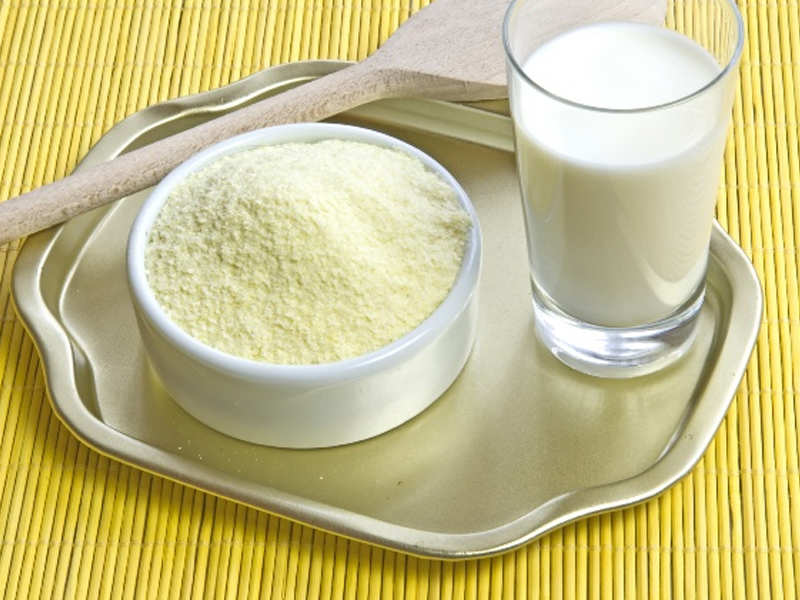
Non-fat dry milk is a common ingredient in many of the recipes that we use. It is an excellent source of protein, but it also contains vitamin C, calcium and other nutrients. Non-fat dry milk can be used for cooking as well as drinking, however it does not taste very good and has a tendency to clump together when water is added. Powdered milk on the other hand tastes great and mixes easily with water or any liquid you will be adding to your recipe.
Milk powder comes in both whole and non fat varieties; use whichever one suits your needs best (in most cases this will be powdered skimmed).
The advantages of powdered over non fat dried are: – It mixes easily into liquids making it easy to cook with – The flavor is much better than non-fat dried so you don’t have any unpleasant surprises if you forget what’s in there! – Compared to canned evaporated or condensed milk its 1/3 cheaper (it really adds up!)
Honey can be consumed even past its expiration date

Honey is a good source of nutrients and antioxidants, but it’s also known to spoil after some time. Honey will continue to be safe for consumption if you keep it in the fridge at all times.
It’s recommended to consume honey within 3 months of purchase, but there are no restrictions on consuming it up until 6 months after its expiration date.
Uncooked rice can last years
It takes about an hour and a half to prepare a large batch of rice.
The time required for making the rice varies from between 15 minutes to 1 hour according to how long you leave the rice on the stove after it has been cooked. If you cook your rice in cold water, cooking time is reduced by 10–20%.
The temperature at which rice is cooked varies depending on the type of cooker used, with most chefs preferring to use a medium-high heat setting.
As with other grains, brown or white basmati rices are not interchangeable because they have different characteristics and differences in taste.
Peanut butter
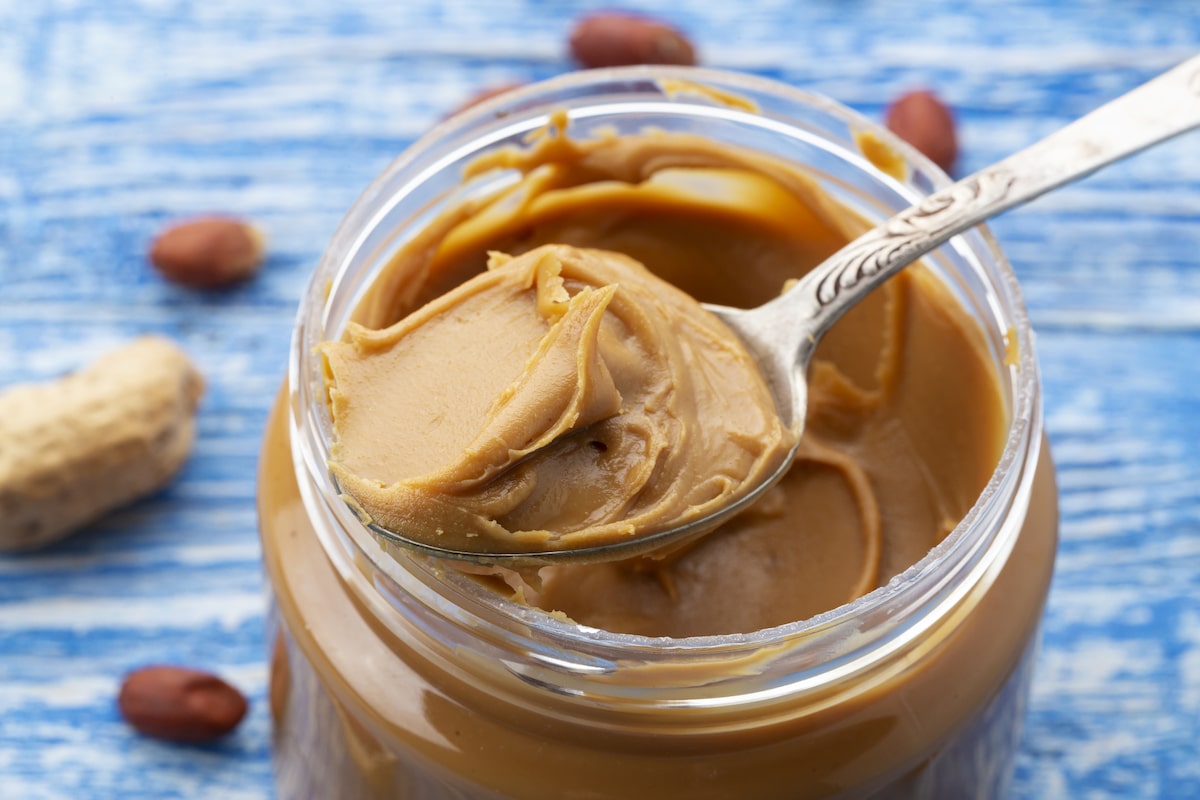
Peanut butter can be a great source of protein and the fats that it contains help to improve our ability to absorb those nutrients.
For the best health, choose Skippy Natural Peanut Butter. Just a couple tablespoons a day can help you survive a period of limited food intake during a disaster.
Dried beans last indefinitely
Beans are a great source of fiber and protein. There are about 15 different types of beans that are filled with calories and last from 10 to 30 years in storage, depending on the type of bean. They can be stored in a cool, dark place.
Nuts

When it comes to plant-based protein, nuts are one of best cource.These superfoods are rich in antioxidants, which can help protect your body against cell damage.
Despite being high in fats, nuts have plenty of health benefits.
These nuts are rich in essential minerals, including calcium, sodium, zinc, potassium, manganese.
If properly stored nuts can effectively last up to 12 months before going rancid.
Conclusion
Never waste food, and always buy in bulk when you can. This will ensure that you have enough to last throughout the winter months.
If it is a life threatening situation where there is no food available, do not panic! You may be able to find some canned goods or fruit that has been stored for a long time but these may only last until the next harvest season, so make sure you stock up on all your emergency food supplies now so that they are ready to go when the need arises.

